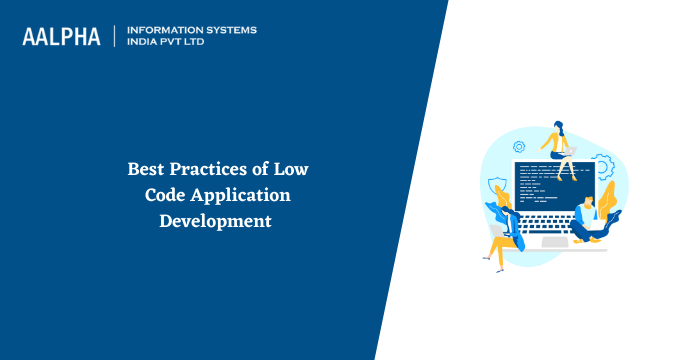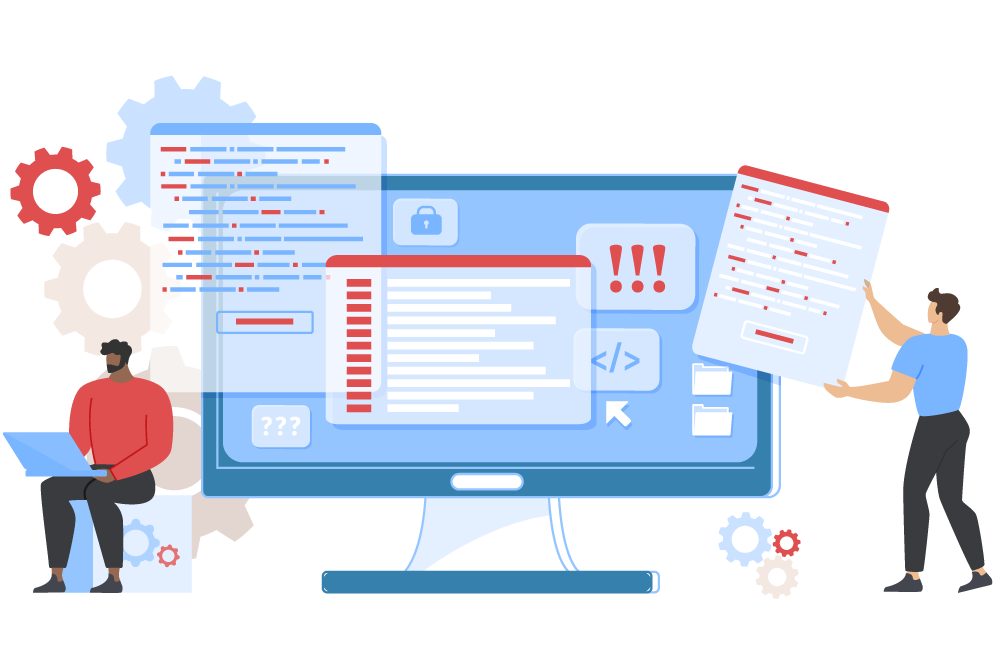Because of a variety of reasons due to a variety of factors, low-code development is easier for non-developers. These are sometimes referred to as "citizens developers."
Drag-and -Drop Builders. Low-code platforms have drag-and-drop interfaces. This provides non-programmers with the ability to build applications using visuals, without having to write code. This makes it easier for those with less technical expertise to be involved in the process of development.
WYSIWYG Editors WYSIWYG Editors "What You saw is what You Receive" editors assist users in creating workflows or interfaces that look as if they were the final products, making them easier to understand.
Simple Workflow and Logic Design:
Visual Workflow Modeling: Users may design business processes and application logic by using visual flowcharts or models that are more user-friendly than the traditional methods of coding.
Pre-built Components of Logic: Low-code platforms often come with already-built logic (e.g. loops and conditional statements) which can be easily adjusted, thus reducing the requirement for complicated programming.
Reusable components and templates:
Libraries of pre-built templates: Numerous low-code platforms have libraries for the most common kinds of software, giving those who are not developers a base to build on and later modify.
Reusable Widgets and Modules: Users can make use of reused widgets. This makes it easier to create and helps to reduce the need for deep knowledge.
Tutorials and guide development:
Step-by-Step instructions: Platforms offer instructions and help on screen for non-developers building applications.
Interactive Tutorials Interactive and hands-on tutorials allow users to learn through doing. They build confidence making use of the platform.
Integration with existing tools
Seamless Integration - Low-code systems can be easily integrated with existing systems and tools for business (e.g. ERP CRM, ERP) that give even non-developers to develop apps that work within their workflows.
APIs and Connectors : APIs built-in and connectors allow users and non-developers to connect their applications to external services without the need for complex code.
Collaboration Features:
Team Collaboration: Features like real-time collaboration and shared workspaces allow non-developers to work alongside business analysts, professional developers and other stakeholders efficiently.
Access control based on role: Role levels can be set for people who aren't developers to make sure they are able to contribute to the development process, but without compromising the security.
Automated testing and debugging:
Low-code platforms usually come with a built-in testing and debugging tools which simplifies the process. Non-developers are now able to verify that their app is working correctly.
Error-highlighting: The platform highlights issues and suggests fixes to help non-developers.
The capacity of low-code software to allow development for those who are not developers is its main benefit. With its intuitive, visually-guided tools and experiences, low-code platforms enable business owners to actively participate and maintain applications. Have a look at the best Low-code Platform for application development examples for more info including azure sql, application development platforms, database in azure, application modernization software, paas service, cloud software applications, software for app development, stored sql procedures, cross platform mobile development, cloud software applications and more.

Benefits Of Low-Code Application Development For Governance And Security
Low-code development of applications offers a variety of benefits in terms of governance and security, which are crucial to ensure that applications are compliant as well as secure and properly managed throughout their lifecycle. These are the main advantages.
Unified Management Console - Low-code platforms offer a central management console that allows administrators to oversee and manage every application. This helps ensure that the same governance is maintained across the entire organization.
Role-Based Access Control: These platforms include robust role-based control which allows administrators to set rules and then enforce these policies. It makes sure that only users with permission can modify or access certain parts of the software.
The Compliance Process and Regulatory Adherence:
A lot of low-code platforms have built-in compliance functions. These are designed to ensure that the applications are compliant with industry standards (e.g. GDPR, HIPAA). They offer frameworks and tools to ensure that applications comply with standards.
Audit trails and logs: Comprehensive audit trails and logging can be combined. This lets companies keep track of access and changes, and also ensure conformity with internal rules as well as external regulations.
Increased Security Measures
Data encryption: Low-code platforms typically provide built-in encryption for data at rest and during transit, which ensures that data with sensitive information is secure.
Security Certifications – Many lowcode companies have security certificates, like ISO 27001 (or SOC2) which proves the compliance of high security standards. Customers can rest assured that the service adheres to these standards.
Automated updates for security:
Regular updates and patches: Low code platforms usually are equipped to handle patches and security updates regularly. This helps ensure that applications remain safe from the latest threats, without developers having to manually alter their settings.
Security Monitoring Tools: These instruments send alerts that are updated in real time, and provide insights into security concerns that might be present.
Data Governance
Data Access Policy: These systems allow organisations define and enforce policies for data access, making certain that only authorized users have access to data and that they are using it in a proper manner.
Data Masking and Anonymization Tools built in to mask data and ensure the security of sensitive information, especially in testing environments and development environments.
Consistent Application Lifecycle Management:
Pipelines for Development and Delivery Low-code platform often include integrated development pipelines as well as delivery pipelines which incorporate security tests. Security is guaranteed throughout the lifecycle.
Version Control. Integrated version management can help track and reverse any changes made to the application, while ensuring that the integrity of it is preserved.
User authentication:
Single Sign-On - Support for single sign-on (SSO) as well as other advanced methods of authentication simplify management and enhances security.
Multi-Factor Authentication : Many platforms include built-in multi-factor support, adding an extra layer of security for accessing applications.
Monitoring of Policy Enforcement and Compliance:
Policy Templates: Low code platforms usually have pre-defined templates for security and governance that allow organizations to quickly apply policies.
Compliance Monitoring Tools The tools offer continuous monitoring and reporting about compliance levels, which makes it easier to identify and address possible issues in advance.
Integrate with existing security infrastructure:
Seamless Intergration: Low code platforms are designed to allow seamless integration with the existing security tools and equipment, such as Identity Management Systems SIEM Solutions (Security Information and Event Management), and Firewalls.
API Security: API security features to protect data and ensure application integrity are built into the API.
Training and best practices:
Guided Best Practices: A number of platforms provide guidelines and best practices for developing secure applications and help non-developers comply with security standards.
Some low-code vendors offer security education to help users learn how to develop and maintain secure applications.
Overall, the governance and security advantages of low-code application development ensure that applications are built and maintained in a safe as well as compliant way. These platforms are equipped with the tools, frameworks and regulatory compliance needed to protect sensitive customer data as well as enforce policies and keep regulatory compliance in check and ease the administration and supervision over the process of developing applications. See the most popular Enterprise application development with Low-code Platform recommendations for more recommendations including cross platform app development, rapid applications, cross platform mobile app development, azure sql server, no code platforms, jdbc server, develop cross platform mobile app, rapid action development, build a docker container, azure sql server and more.

The Benefits Of Low-Code Programming For Both Community And Vendor
Low-code development platforms for applications provide significant advantages in terms of vendor support and community, which are crucial for ensuring the success of implementation, continuous maintenance, and continual enhancement of applications. Vendor Support
Comprehensive Technical Support:
Dedicated Support Team: Many low code platforms have dedicated support staff that can assist with technical queries, troubleshooting issues and providing assistance. They can ensure that issues are addressed promptly.
Support is available 24/7. Numerous vendors offer round-the-clock support, which can be particularly useful for businesses that operate across different time zones.
Training and Onboarding
Structured Training: A number of providers offer structured training like webinars, tutorials, and certification courses that help users quickly become more comfortable with their platform.
Personalized Onboarding: A lot of vendors provide personalized onboarding to assist new customers use the platform efficiently and adapt it to their particular requirements.
Regular updates and enhancements
Continuous improvement: Low-code platforms generally release periodic updates which contain new features, performance enhancements and security patches ensuring that the platform remains modern and secure.
Feedback integration: Vendors often integrate user feedback during their process of development to ensure that the platform is able to meet the changing needs of the users.
Comprehensive Documentation:
Documentation: Detailed documentation is offered for all products. It covers everything from the basics to advanced customization. This helps users find solutions for themselves.
API References Detailed API documentation lets developers create custom applications and integrate low-code platforms with other systems.
Professional Services and Consulting:
Expert Consulting: Many vendors provide consulting services for strategic planning, architecture and complicated implementations. This assists users maximize their software's capabilities.
Custom Development Services A few vendors provide custom development services in order to create specific features and integrations which aren't available in the standard.
Community Support for the Community
Active User Communities
Forums and discussion boards: Many platforms with low-code have vibrant online community where users can ask for help, share solutions and collaborate in finding the most effective practices.
User Groups and Meetings: Local and virtual meetings and groups of users offer opportunities to learn, network, and share experiences with others.
Knowledge Sharing and collaboration:
Community-Contributed Resources: Users often share templates, modules, and extensions that they have developed, which can be reused or adapted by others, accelerating development and innovation.
Crowdsourced Solution Finding: The collective experience and wisdom of a group could be a valuable resource in finding solutions to complex problems.
Development and learning:
Community-Led Training: Many communities host workshops, training sessions and webinars. They are often led by experienced users who share practical knowledge and more advanced methods.
Online Tutorials and Courses The community members develop and publish tutorials, online courses and how-to guides. This improves the educational resources accessible to all users.
Feedback and Influence
Product Feedback Channels Community forums contain a number of channels for giving feedback to vendors, which can help shape the development of features.
Beta Testing Programs. Active community members can take part in beta-testing programs. They will have early access to the new features of the platform and the chance to influence its evolution.
Recognition and Encouragement
Community Recognition Programs - A lot of vendors offer recognition programs that acknowledge the contribution of the active members of their communities and include MVP (Most Valuable Professionals) programs.
Peer Support. Community members offer assistance to each other. They share their expertise with users who are less familiar and provide guidance. This creates an environment that is supportive and collaborative.
Overall the combination of strong support from the vendor and an active and engaged community creates a comprehensive support ecosystem for the development of low-code applications. The developers will have the knowledge and resources they need to build the application, deploy it and keep it running. application.
